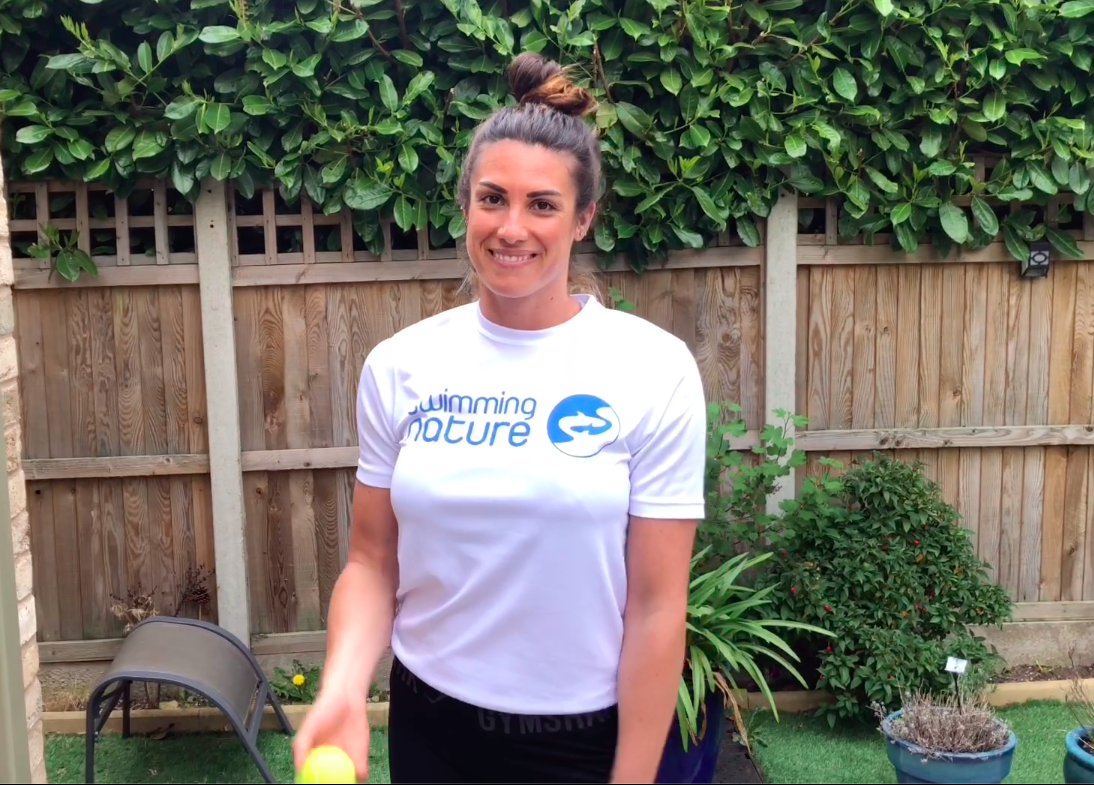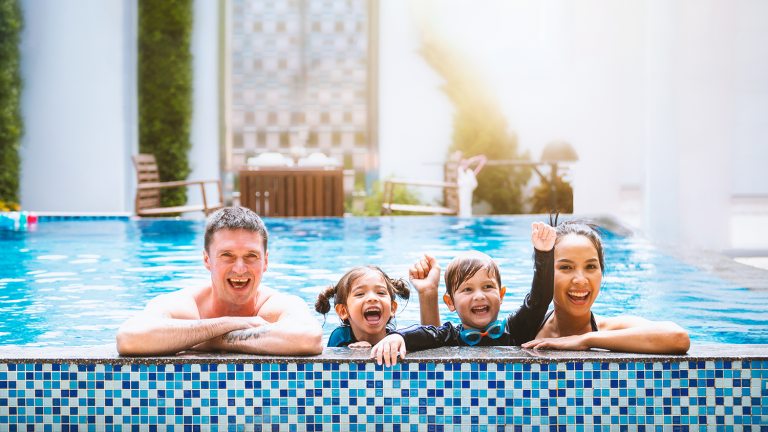Luckily, after the most recent government announcement which stated that indoor pools can open in England from the 25th of July, there isn’t much longer until we can get back in the water!
However, if you won’t be returning to the pool straight away, or you wish to keep up your swimming skills outside of the water, take a look at our list of dryland exercises for both children and adults below. Written by one of our vastly experienced teachers, Zoe Liokalou, we can promise that you’ll find a wide variety of movements that will help strengthen cores, overall mobility, hips, shoulders and more.
Section 1) Dryland Exercises for Children
1. Squat Jumps (with Streamline Arm Position)
Squat jumps help with explosiveness when jumping off diving blocks, alongside effective exits after doing a tumble turn.
A squat jump works numerous muscles in the lower body, core and even the upper body. The major muscles used are your calves, quads, hamstrings, glutes and abdominals.
How to perform: start from a standing position with your feet shoulder-width apart. Bend your elbows and bring your arms up so that your fists are in front of your face. Drop into a squat whilst making sure your knees don’t pass your toes, and pull your arms back so that your fists are beside your hips. Jump high with an explosive movement and raise your arms straight above your shoulders with your head tucked in, like a push and glide position. Then land softly on your feet in a squat position. Hold the squat for 2-3 seconds and then perform again.
2. Plank
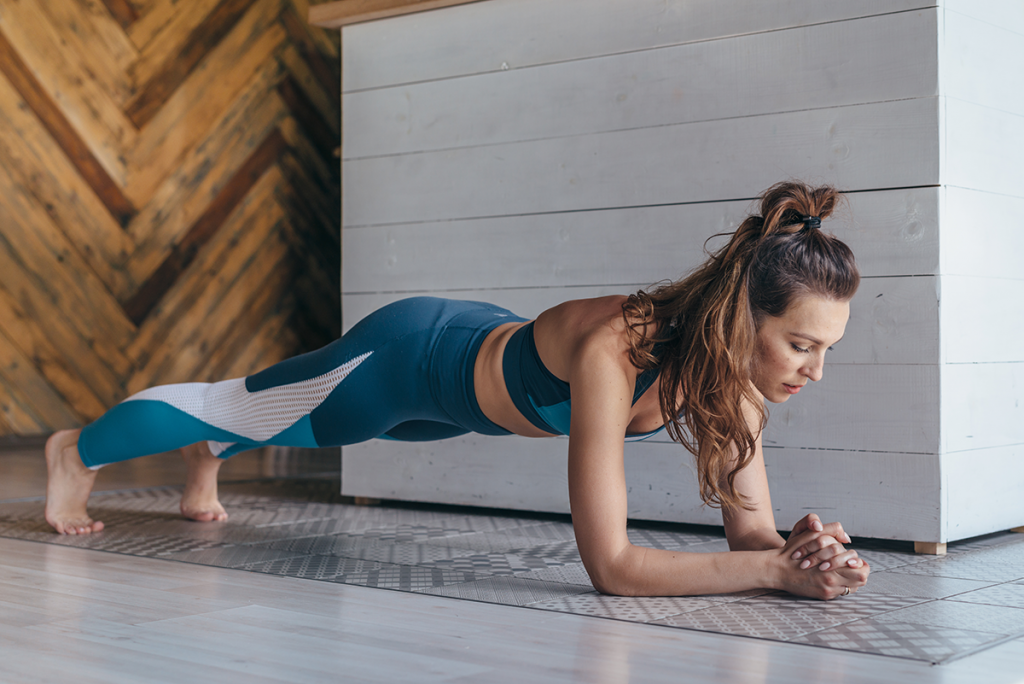
Planking helps with strengthening the core, which allows you to stay properly aligned in the water by keeping your hips up high and reducing resistance and drag. Also, core strength helps build a stronger underwater kick, faster flip turn and makes your technique more fluid.
A plank strengthens the whole core including all of the abdominal muscles, plus shoulder and upper back muscles.
How to perform: there are numerous variations when it comes to a plank. However, the easiest and simplest way to help kids build a strong core would be the straight plank with elbows and forearms on the floor. Support yourself on your forearms and toes, keeping your elbows directly below your shoulders. To achieve a straight plank, squeeze the abdominals and glutes, keep your hips aligned and try to avoid an arched back. Hold for 30 seconds or more each time.
3. Broomstick Twists
Broomstick twists help with body and shoulder rotations for front crawl and backstroke.
This exercise also assists the mobility of your body and allows the appropriate rotation of the body during the front crawl and backstroke reach/catch phase. Swimmers should be able to rotate their body (shoulders) to at least 90 degrees.
How to perform: stand straight with your legs shoulder-width apart and your knees slightly bent. When performing this exercise, try to keep your hips and neck as straight as possible, and look forward at all times. Place your broomstick behind your neck so that it sits on your traps, and roll your hands over it so that your elbows are facing downwards to the floor. Perform a twist to one side, trying to get the end of the broomstick in front of your face. Hold this for 3 seconds and then twist to the other side.
4. Alphabet
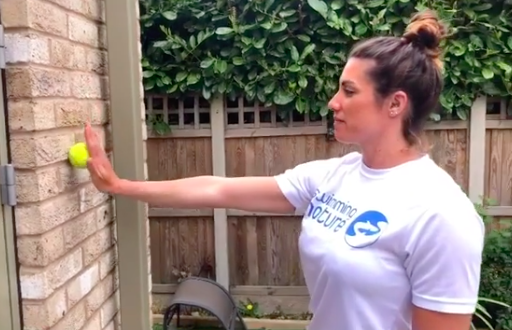
This movement helps to strengthen the rotator cuff, whilst working on shoulder stability to avoid future injuries.
How to perform: stand nice and tall facing a wall at an arms distance from the wall. Place a tennis ball between your palm and the wall and start rolling it around, writing out the alphabet, or any sentences you like. Repeat on the other arm.
5. Flutter Kicks
Flutter kicks help make your front crawl and backstroke kick faster and more effective. They also strengthen your abdominal muscles, hip flexors and your speed in the kick movement.
How to perform: sit down with your legs straight in front of you and your hands placed on the floor by your hips. Start fluttering your legs up and down, focusing on making small kicks, mimicking your actual kicking action. You can make this more challenging by getting someone to hold a pillow or a yoga ball above your foot (where your shoelaces are) and then you kick that as fast and as hard as you can.
The same exercise can be performed on your front. Lie down with your arms stretched in a streamlined position and your chin tucked in. Start making flutter kicks, downward this time. Use a pillow or a yoga ball to kick onto.
6. Swim Mimic
This helps to improve technique and strengthens your core and muscles for all 4 strokes.
How to perform: this one is easy. You mimic your swim strokes as if you are in the water. It can be done on the floor but it is more effective if you use a bench, a chair or a large pillow to lie across so that you are not in contact with the ground. Try to mimic the technique as best as you can!
Section 2) Dryland Exercises for Adults
1. Forward Squat Jump
Forward squat jumps help with your explosiveness when jumping off diving blocks, as well as your push and glides.
This exercise works numerous muscles in the lower body, core and even the upper body. The major muscles used are your calves, quads, hamstrings, glutes and abdominals.
How to perform: start from a standing position with your feet shoulder-width apart. Bend your elbows and bring your arms up so that your fists are in front of your face. Drop into a squat with your knees behind your toes and pull your arms back so that your fists are beside your hips. Jump high and forward with an explosive movement and bring your arms forward in front of your face. Then land softly on your feet in a squat position with your weight on your heels. Hold the squat for 2-3 seconds and then perform again.
2. Advanced Burpee to Reverse Burpee
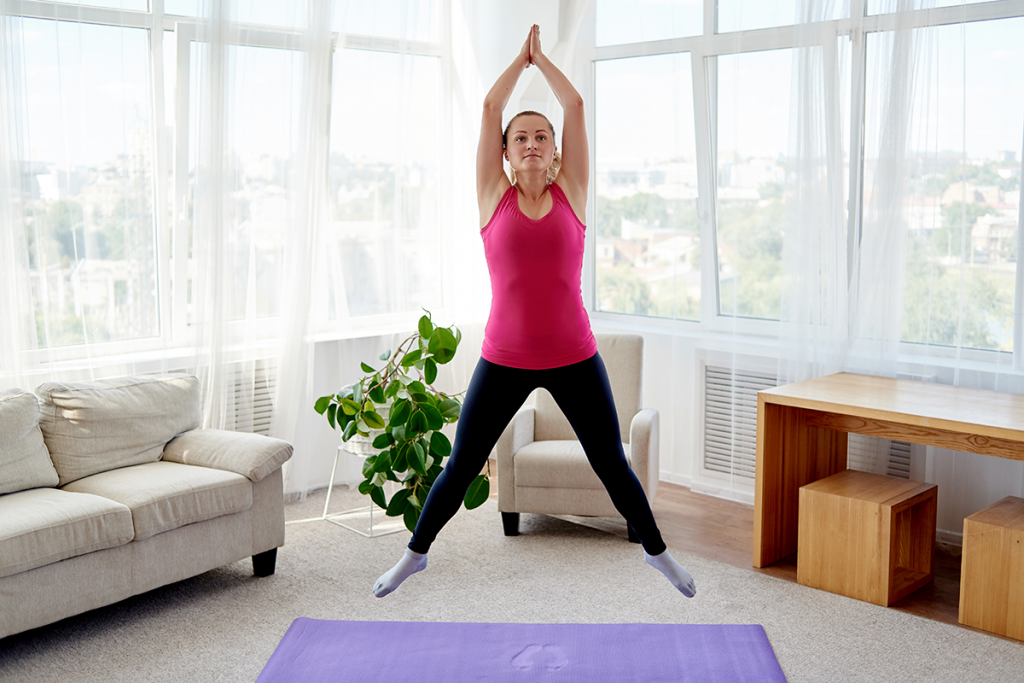
This move helps with general fitness, increases blood flow to the whole body, strengthens your arms and is a fast movement that is generally required in swimming.
Burpees are a whole-body workout that specifically uses your hamstrings, quads, calves, abdominals, pecs, triceps and deltoids.
How to perform: start from a standing position and then drop to a horizontal plank position. Form a chest to floor press up, then jump your feet up behind your hands or near your hips from the plank position. Add another jump to lift your body to stand upright and lift your arms up with your head tucked in. You should form a push and glide streamline position and jump in the air as explosively as you can. Land softly with your knees slightly bent, fall onto your bum and then onto your back for the reverse burpee. Lie on your back and tuck your knees to your chest. Use the momentum that is created and try to rock back onto your feet with your legs kept as close together as possible.
3. Weighted Alphabet
This helps to strengthen the rotator cuff and work on shoulder stability to avoid future injuries.
How to perform: with this exercise you can use a dumbbell, a bottle of water, a tin of baked beans or whatever you like. Stand nice and tall with your back straight. Place the desired weight in your palm and with a straight arm start writing out the alphabet, or any sentences you like. Repeat on the other arm.
4. Russian Twists
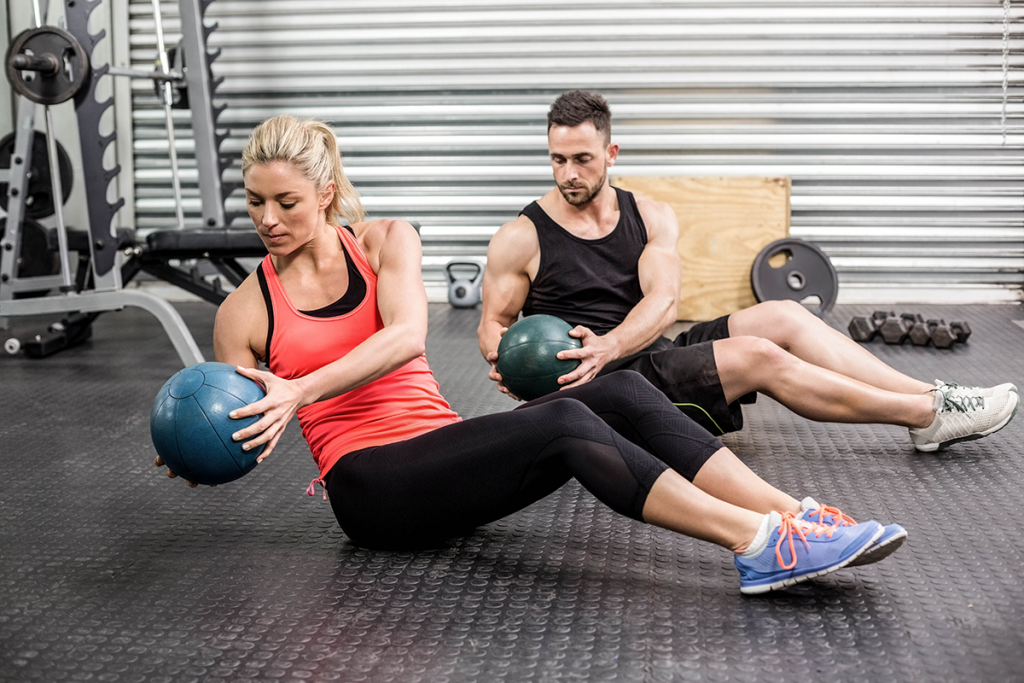
This move helps improve your rotational manner by giving flexibility to your upper torso. This is very similar to the rotations in front crawl and backstroke. Being able to rotate with good control in swimming is very important!
Russian twists strengthen the core and the abdominals which are essential for good streamlined positioning that reduces drag in the water.
How to perform: sit down on the floor and lift your heels up, whilst leaning back a little bit so you keep your balance. Keeping your hands together, either holding a dumbbell or any weight of your choice or even without a weight, turn your shoulders to twist your body so that they are now touching the floor near the side of your left hip. Repeat this on the other side. Try to perform this exercise steadily and in control so that your legs and the rest of your body do not flop from side to side.
5. Commando Plank
This helps with strengthening the core that will then help you stay properly aligned in the water, as you’ll be able to keep your hips up high which reduces resistance and drag. Also, core strength helps to build a stronger underwater kick and faster flip turn.
A plank strengthens the whole core including all of the abdominal, shoulder and upper back muscles. It also gives extra strength to the shoulders, triceps and wrist flexors.
How to perform: get on the floor into a straight plank with your palms and toes on the floor. Support yourself on your palms and toes, keeping your hands directly below your shoulders. To achieve a straight plank, squeeze the abdominals and glutes, whilst keeping the hips aligned. Try to avoid an arched back. Then, place your right forearm and elbow onto the floor, followed by the left one and hold for 1-2 seconds. After this, lift yourself back onto your palms one arm at a time. Repeat this whilst keeping a tight core.
6. Swim Mimic with Bands
This helps to improve technique, whilst strengthening your core and muscles used for all 4 strokes to prevent injuries. The bands provide a force that your muscles must work against.
How to perform: all competitive and non-competitive swimmers should have resistance bands at home. However, if you don’t, you can just do the stroke mimic without resistance. Mimic your swim strokes as if you are in the water. This drill is more effective if you use a bench, a chair or remain in a standing position with bent knees as though you are in the water and not in contact with the ground. Try to mimic the technique as best as you can and use an extra push on the push phase of each stroke.
If you need some help envisioning how to do the above, take a look at our Instagram where Zoe has put together a series of posts that demonstrate some of the movements, like this one here.
We hope you’ve enjoyed our post, and we’d love to see you participating in any of our exercises, so feel free to tag us in any photos or videos! Equally, let us know if you have any more suggestions you would add to the list by commenting below.

 LOG IN
LOG IN
 CONTACT US
CONTACT US
